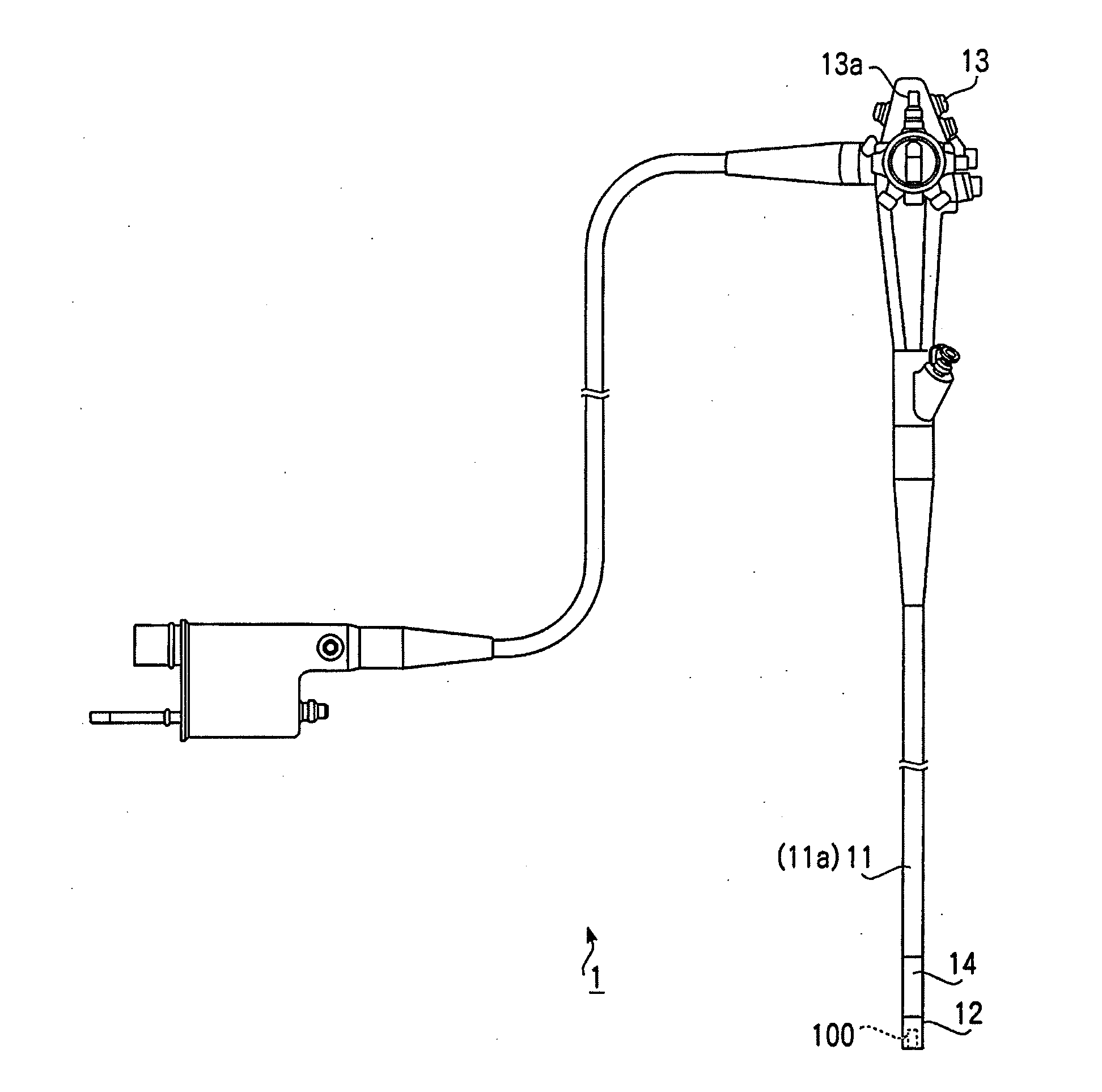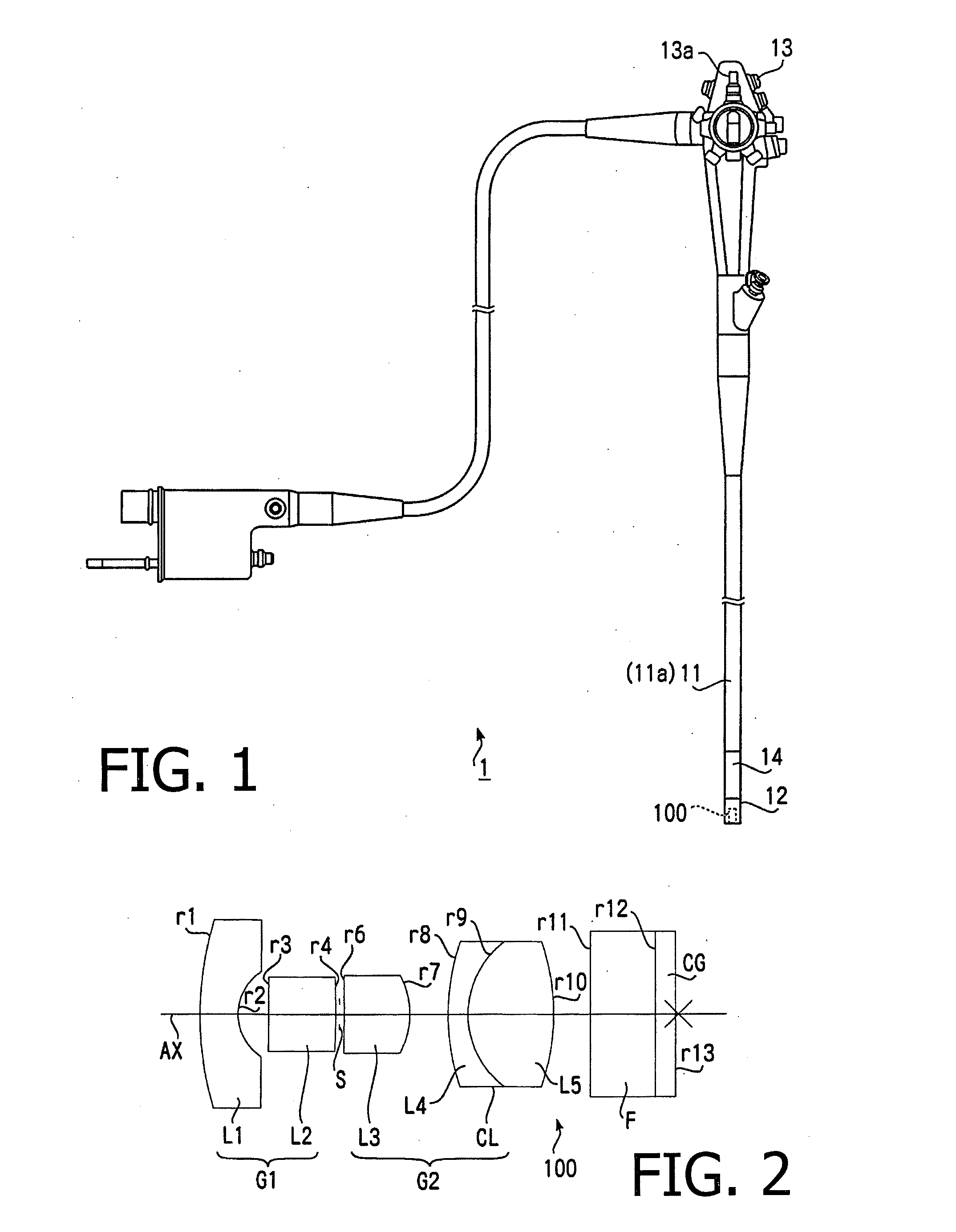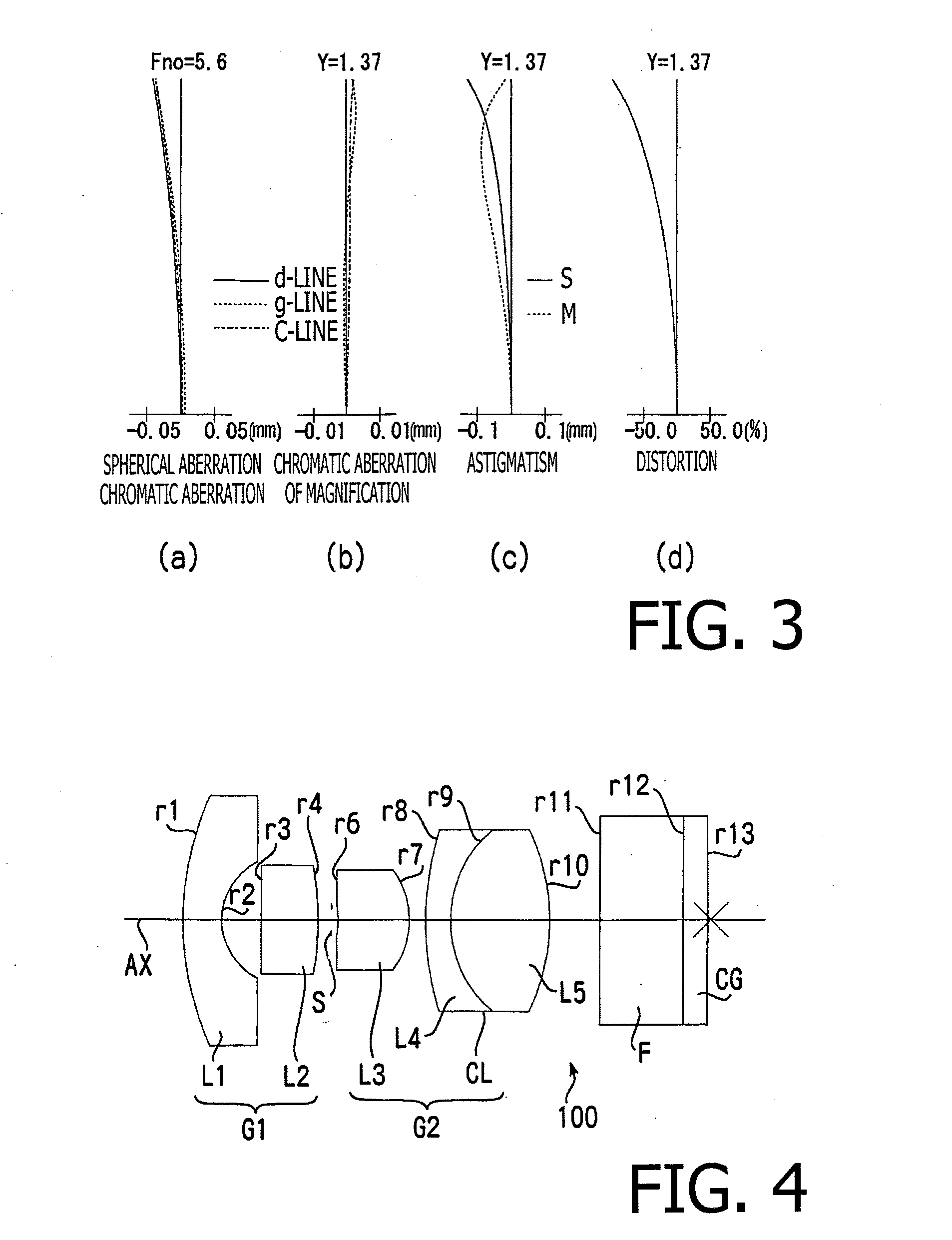Objective lens for endoscope, and endoscope
a technology of endoscope and objective lens, which is applied in the field of endoscope, can solve the problems of increasing the time for diagnosis, the inability to turn the tip portion to a desired direction, and the burden on both the operator and the patient, and achieves the effects of wide angle of view, convenient optical performance, and compact siz
- Summary
- Abstract
- Description
- Claims
- Application Information
AI Technical Summary
Benefits of technology
Problems solved by technology
Method used
Image
Examples
example 1
[0082]As described above, the objective lens 100 for an endoscope according the example 1 of the invention is shown in FIG. 2. Table 1 shows a concrete numeric configuration (design values) of the objective lens 100 for an endoscope (and optical components arranged on the rear side thereof) according to the example 1. In Table 1, the surface number n corresponds to the surface reference rn in FIG. 2, excepting the surface number 5 for the aperture stop S. In Table 1, R (unit: mm) denotes the radius of curvature of each surface an optical component, D (unit: mm) denotes a thickness of an optical component or an interval between optical components, N(d) denotes an refractive index at d-line (wavelength of 588 nm), and νd denotes Abbe number at d-line. Table 2 shows specifications (F number, the focal length (unit: mm) of the entire system, the optical magnification, half view angle (unit: deg), and the image height (unit: mm)) of the objective lens 100 for an endoscope.
TABLE 1No.RDN(d...
example 2
[0084]FIG. 4 is a cross sectional view illustrating the arrangement of the optical components including the objective lens 100 for an endoscope according to the example 2. As shown in FIG. 4, the objective lens 100 for an endoscope according to the example 2 has the same number of lenses as that of the objective lens 100 for an endoscope according to the example 1. FIGS. 5(a) to 5(d) are aberration diagrams (the spherical aberration, the longitudinal chromatic aberration, the chromatic aberration of magnification, the astigmatism, and the distortion) of the objective lens 100 for an endoscope according to the example 2. Table 3 shows an concrete numeric configuration of the optical components including the objective lens 100 for an endoscope according to the example 2, and Table 4 shows specifications of the objective lens 100 for an endoscope according to the example 2. As shown in Tables 3 and 4 and FIGS. 5(a) to 5(d), the objective lens 100 for an endoscope according to the examp...
example 3
[0085]FIG. 6 is a cross sectional view illustrating the arrangement of the optical components including the objective lens 100 for an endoscope according to the example 3. As shown in Table 3 indicated below, the objective lens 100 for an endoscope according to the example 3 has a half view angle exceeding 95°. Therefore, it is difficult to suitably correct the curvature of field if the lens arrangement is the same as that of the example 1 or 2. For this reason, as shown in FIG. 6, a positive lens L6 is arranged between the positive lens L3 and the cemented lens CL so as to suitably correct the curvature of field. That is, in the example 3, the second lens group G2 has three lenses including the positive lens L3, the positive lens L6 and the cemented lens CL. The first lens group G1 has the same number of lenses as that of the first lens group G1 of the example 1. FIGS. 7(a) to 7(d) are aberration diagrams (the spherical aberration, the longitudinal chromatic aberration, the chromat...
PUM
 Login to View More
Login to View More Abstract
Description
Claims
Application Information
 Login to View More
Login to View More - R&D
- Intellectual Property
- Life Sciences
- Materials
- Tech Scout
- Unparalleled Data Quality
- Higher Quality Content
- 60% Fewer Hallucinations
Browse by: Latest US Patents, China's latest patents, Technical Efficacy Thesaurus, Application Domain, Technology Topic, Popular Technical Reports.
© 2025 PatSnap. All rights reserved.Legal|Privacy policy|Modern Slavery Act Transparency Statement|Sitemap|About US| Contact US: help@patsnap.com



